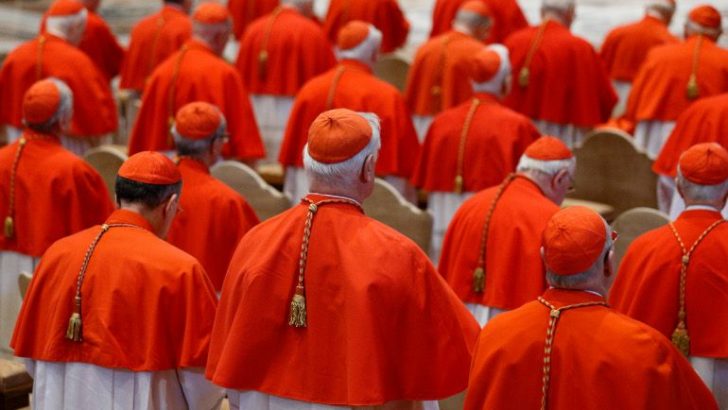Notebook
Fr Bernard Healy
As October rolls around again, I return to Rome to resume my studies. My first fortnight back will coincide with two significant events. On Saturday October 5, Pope Francis will be creating 13 new cardinals, and a week later he will be canonising Blessed John Henry Newman, the subject of my studies.
I’ve always suggested the weekend when new Cardinals receive their ‘red hats’ as being amongst the best times to visit Rome. There’s a buzz around the city as family, friends and supporters of the new cardinals come on pilgrimage to Rome. By nominating cardinals the Pope makes bishops and priests from all around the world part of the clergy of the city of Rome, so the presence of these pilgrims reminds us that Rome is not only the Eternal City, but the Church’s Universal City.
Celebration
This international dimension makes for a fun celebration. A few hours after the solemn Mass when the new cardinals get their cardinatial rings and birettas, the doors of the Vatican palace are thrown open and everyone gets to meet the cardinals. There is usually plenty of international colour with groups from the cardinals’ home countries celebrating, often with music and dance.
One has the opportunity to formally greet the cardinals and receive their prayer-cards and the chance to explore some of the state rooms of the Vatican usually inaccessible to the public.
This international dimension makes for a fun celebration”
It is usual for many cardinals to say that their nomination is not so much a personal honour, but rather a recognition of the people they serve. There’s a great truth to that, but it’s not always the full story.
One classic example is when Pope Leo XIII named the English priest and scholar Blessed John Henry Newman amongst his first crop of cardinals. Leo made it clear on a number of occasions that this was a personal appointment and an indication of his own priorities – a vindication of Newman’s own work on behalf of the Church and a sign that Leo himself wanted to put a renewal of intellectual life at the heart of his pontificate.
Looking at the list of men that Pope Francis has named for the upcoming consistory it is notable that he has almost entirely passed over those dioceses that traditionally get red hats. An emphasis on those who work for the most needy and marginalised, as well as on areas where the Church is marginalised is clear when you see red hats heading to places like Huehuetenango (Guatemala) and to Rabat.
Another very deliberate personal appointment is that of Fr Michael Czerney who has a particular responsibility for working on migrant issues. Given that his immediate boss in the Vatican’s organisational hierarchy is not a Cardinal, this is a particular sign of respect for Fr Czerney’s work and its importance for the Holy Father.
***
One might think that there are few things more Roman and few things more Catholic than a cardinal, but during a recent visit to London I was exploring the fascinating medieval church of St Magnus Martyr and spotted a cardinal’s red biretta in the sacristy. It turns out that the Anglican priest in charge of the parish is known as the ‘Cardinal Rector’.
Prior to 1567 the word cardinal (meaning hinge, i.e. important) was part of various senior clerical titles throughout the Church. However, St Pius V decided that the title should be restricted to the modern type of cardinal who is appointed by the Pope to an honorary position in the Roman Church. All the other kinds of cardinal vanished, except in England where the Established Church had split from Rome and the Pope’s decree was ignored. And that’s why there’s still an Anglican priest in London who gets to call himself a cardinal.
***
Speaking of English cardinals, probably the most notorious was the venal Cardinal Wolsey [pictured], for many years the right-hand-man to Henry VIII.
It is said that the benches of the House of Lords in London are upholstered in red because Wolsey wanted them to match his Cardinal’s robes when he sat as Lord Chancellor.
Wolsey died out of the King’s favour, stripped of his wealth and about to face trial for treason; during his last illness he lamented: “If I had served God as diligently as I have done the King, he would not have given me in my grey hairs.”


 Photo: CNS/Paul Haring
Photo: CNS/Paul Haring 